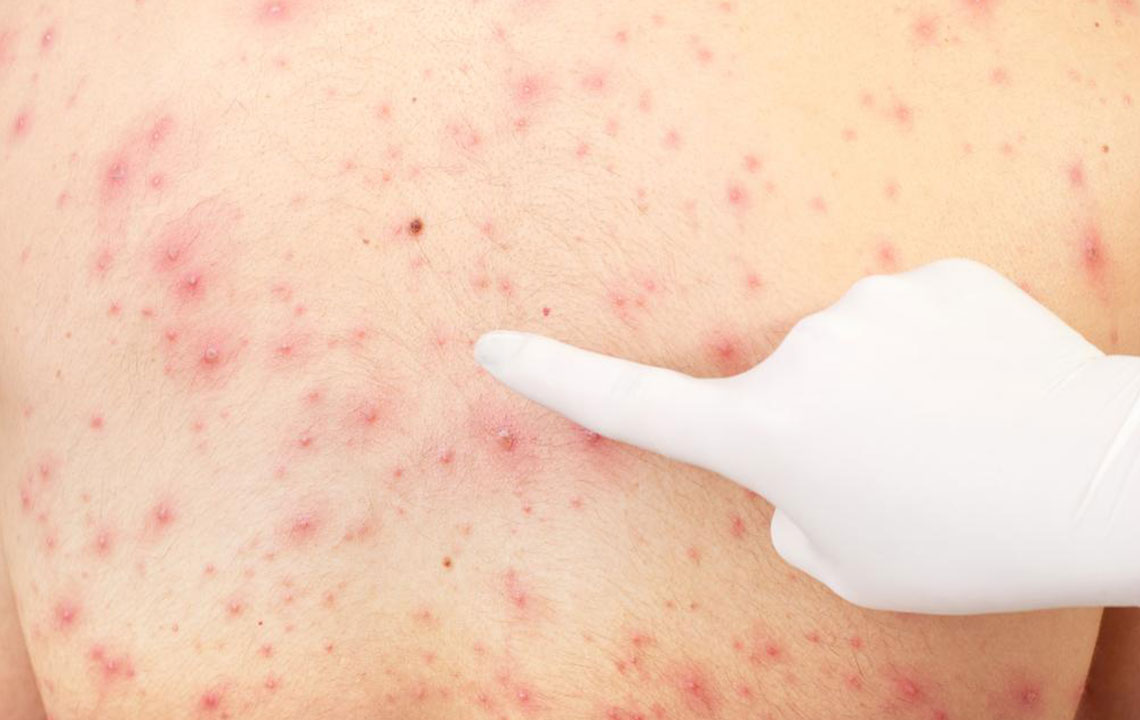Remedies to Treat Keratosis Pilaris at Home

Keratosis pilaris is a skin condition amongst adolescents which causes acne-like small bumps on the skin. This occurs when your body produces too much of a single type of protein on the skin which deposits on the pores and hair follicles. These bumps can either be white or red but are generally not accompanied by itching or pain.
It is mostly a chronic condition which isn’t a severe issue and disappears by the age of 30 in most people. However, it is a highly common skin condition that affects about 50 to 80% of the adolescents and about 40% adults.
These bumps can be annoying and avoid you from wearing clothes that show off your arms or thighs where this condition affects. But, there are simple treatments to get rid of these bumps which are mentioned further in this article.
Exfoliate Your Skin
Repeated exfoliation is one of the easiest ways to fight these bumps. Exfoliation removes dead cells on the surface of your skin and lets your skin breathe. This applies to the keratin deposit on the skin as well and can release the trapped hair underneath it. It can give results in just a few weeks but has to be done regularly to maintain the smoothness of the skin.
It can either be done mechanically or chemically by peeling the outermost layer of the skin. Sometimes these chemicals can irritate the skin, and constant rubbing can cause dehydration and roughening. So, make sure that you exfoliate your skin in moderation and don’t overdo it.
Scrubbing
You can use a soft loofah or sponge whenever you take a bath to gently rub down on the extra keratin deposited on your skin. You can also alternatively use a washcloth. However, if you have a highly sensitive skin, use a konjac sponge which is extremely gentle on the skin.
Don’t try to rub these bumps off at one go. This can cause irritation and rashes on your skin and also swell the hair follicles. If you are already using a scrub or loofah, try using a rougher one so that it can even out the bumps on your skin.
Olive Oil
You can mix two tablespoons of olive oil with three tablespoons of salt to make a slightly abrasive paste and rub this on your skin. Massage it for a few minutes before washing it off completely as a Keratosis Pilaris treatment. This is a brilliant two-in-one process where the salt exfoliates your skin, and the olive oil moisturizes it. Repeat this process several times in a week to get better results.
Coconut Oil
Coconut oil is a popular substance which has several medicinal properties and health benefits. You can also use coconut oil in place of olive oil with salt to rub on your skin. You can also make a paste with brown sugar to give you the same effect. Scrub it on your skin for a few minutes before rinsing it off.
If you have sensitive skin, you can use coconut oil as it has anti-inflammatory properties. It gets completely absorbed into your skin to keep it hydrated and moisturized.
Oatmeal
Oatmeal is the grounded form of oats which is used in porridges, cakes, and other dishes. Using an oatmeal scrub can gently remove the bumps on your skin. Mix a couple of tablespoons of oatmeal in 2-3 tablespoons of water or milk and gently scrub it on your skin on the affected areas. Do this in a circular motion and then wash it off with water. This can be slightly messy, but it leaves your skin feeling soft.
You can also wrap some oatmeal in a muslin cloth and gently rub it on your skin whenever you take a bath. This leaves the same effect on your skin like the oatmeal paste. You can apply a moisturizer to keep your skin moisturized after washing the oatmeal off.
Apple Cider Vinegar
You must have already heard about apple cider vinegar from various sources for its medicinal properties and health benefits. You can also use ACV on your skin as a Keratosis Pilaris treatment. You can either apply it directly onto your skin with a sponge or washcloth. Or you can even dilute the vinegar with a wet sponge. Leave this on your skin for 10-15 minutes before washing it off.
The acidity of the vinegar behaves as a chemical exfoliating agent which can gently remove the extra layer of keratin on your skin and open up the pores. If you find your skin to be dry after this procedure, apply a moisturizer or some coconut oil to keep your skin soft.
Keratosis Pilaris treatment is a fairly simple ordeal. You can also use some yogurt on your skin or make some modifications in your diet to avoid the excessive production of proteins on your skin.


